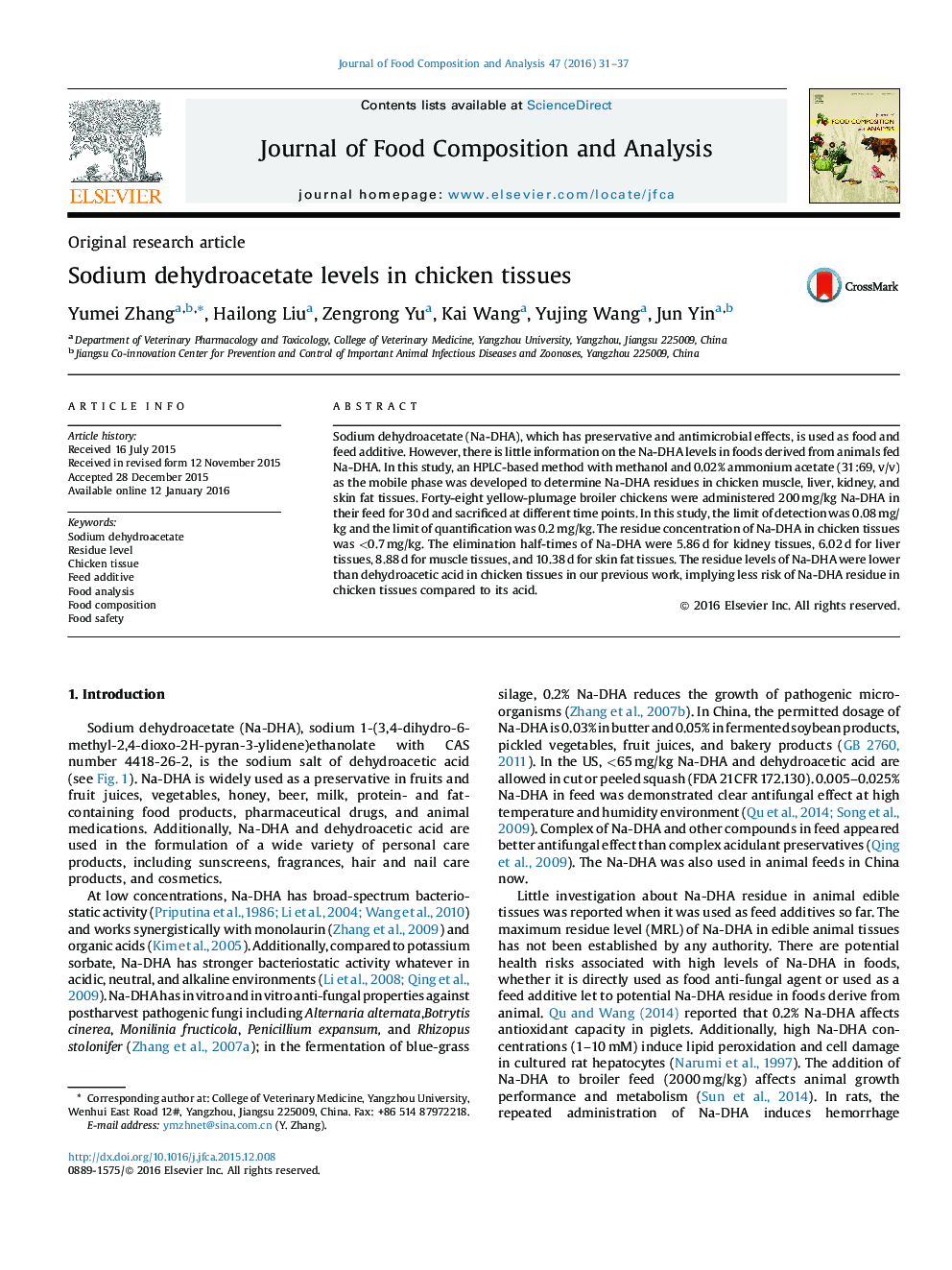| Article ID | Journal | Published Year | Pages | File Type |
|---|---|---|---|---|
| 7620223 | Journal of Food Composition and Analysis | 2016 | 7 Pages |
Abstract
Sodium dehydroacetate (Na-DHA), which has preservative and antimicrobial effects, is used as food and feed additive. However, there is little information on the Na-DHA levels in foods derived from animals fed Na-DHA. In this study, an HPLC-based method with methanol and 0.02% ammonium acetate (31:69, v/v) as the mobile phase was developed to determine Na-DHA residues in chicken muscle, liver, kidney, and skin fat tissues. Forty-eight yellow-plumage broiler chickens were administered 200Â mg/kg Na-DHA in their feed for 30Â d and sacrificed at different time points. In this study, the limit of detection was 0.08Â mg/kg and the limit of quantification was 0.2Â mg/kg. The residue concentration of Na-DHA in chicken tissues was <0.7Â mg/kg. The elimination half-times of Na-DHA were 5.86Â d for kidney tissues, 6.02Â d for liver tissues, 8.88Â d for muscle tissues, and 10.38Â d for skin fat tissues. The residue levels of Na-DHA were lower than dehydroacetic acid in chicken tissues in our previous work, implying less risk of Na-DHA residue in chicken tissues compared to its acid.
Related Topics
Physical Sciences and Engineering
Chemistry
Analytical Chemistry
Authors
Yumei Zhang, Hailong Liu, Zengrong Yu, Kai Wang, Yujing Wang, Jun Yin,
